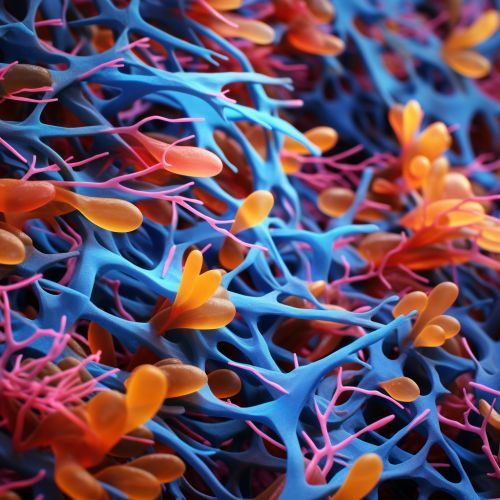Gram-negative bacteria
Introduction
Gram-negative bacteria are a group of bacterial species that are classified by the color they turn after a chemical process called Gram staining. These bacteria do not retain the crystal violet dye used in the Gram stain process, resulting in a negative result. This is due to the structure of their cell wall, which is composed of a thin peptidoglycan layer surrounded by an outer membrane. This structure is distinct from that of Gram-positive bacteria, which have a thick peptidoglycan cell wall without an outer membrane.


Cell Wall Structure
The cell wall of Gram-negative bacteria is more complex than that of Gram-positive bacteria. It consists of a thin layer of peptidoglycan (about 10% of the cell wall), located between the cytoplasmic membrane and the bacterial outer membrane. The outer membrane of Gram-negative bacteria is a unique feature that distinguishes them from Gram-positive bacteria. This outer membrane protects the bacteria from certain antibiotics, dyes, and detergents that would otherwise damage the inner membrane or cytoplasm.
Outer Membrane
The outer membrane of Gram-negative bacteria is composed of lipopolysaccharides (LPS), lipoproteins, and phospholipids. The lipopolysaccharide layer, also known as the LPS layer or endotoxin layer, is of particular medical importance as it can trigger strong immune responses in animals.
Classification
Gram-negative bacteria include a wide variety of species that can be found in many different environments, including in soil, in water, and as part of the normal flora in the human body. They can be further classified into several different families, including the Enterobacteriaceae, Pseudomonadaceae, and Vibrionaceae families, among others.
Pathogenesis
Many Gram-negative bacteria are pathogenic, causing diseases in humans and other animals. The pathogenicity of these bacteria is often related to the presence of the outer membrane and the associated LPS layer, which can trigger strong immune responses. Some Gram-negative bacteria, such as Escherichia coli and Salmonella, are well-known causes of foodborne illness.
Antibiotic Resistance
Gram-negative bacteria are often more resistant to antibiotics than Gram-positive bacteria. This is largely due to the presence of the outer membrane, which can act as a barrier to many types of antibiotics, and to the ability of many Gram-negative bacteria to expel antibiotics from the cell using efflux pumps. Antibiotic resistance in Gram-negative bacteria is a significant concern in healthcare settings, where infections caused by resistant strains can be difficult to treat.
